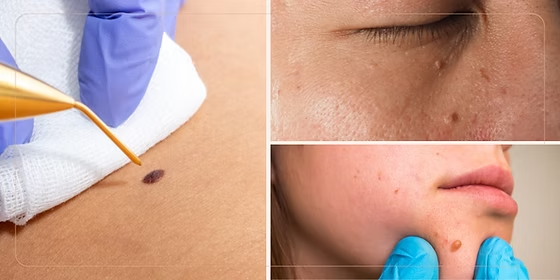Medical billing in dermatology is inherently complex, owing to the specialty’s diverse range of services from routine skin assessments to intricate surgical and cosmetic procedures. A key challenge lies in distinguishing between medically necessary treatments and non-reimbursable cosmetic services.
Even when narrowing the focus to skin tag removal, providers encounter a variety of ICD-10 diagnosis codes, some reimbursable, others not. This comprehensive guide outlines the essential ICD-10 codes for skin tag removal to help dermatologists navigate reimbursement challenges more effectively.
If you’re a dermatology provider facing frequent claim denials for skin tag removals, this guide is for you.
What Are Skin Tags?
Also known as acrochordons, skin tags are benign, soft skin growths that commonly appear in areas subject to friction such as the neck, eyelids, armpits, and groin. Other terms include soft fibromas, cutaneous papillomas, and fibroepithelial polyps.
While typically harmless, these lesions can become irritated or painful, occasionally necessitating medical intervention. For billing and diagnostic purposes, ICD-10 codes standardize the classification and documentation of skin tags, ensuring consistency across records and claims.
Why ICD-10 Codes Matter for Skin Tags
Proper use of ICD-10 codes for skin tags supports:
- Accurate diagnosis
- Efficient medical documentation
- Justification for insurance reimbursement (when medically necessary)
- Streamlined treatment planning and inter-provider communication
- Clear differentiation between reimbursable and cosmetic procedures
These codes serve as the foundation for reliable insurance claims and optimized revenue cycle management in dermatology.
Billable ICD-10 Codes for Skin Tag Removal
Below are frequently used billable ICD-10 codes when skin tag removal is deemed medically necessary:
L91.8 – Other Hypertrophic Disorders of the Skin
This generalized code applies when no more specific diagnosis is appropriate. When using L91.8, ensure detailed documentation supports its use, including lesion description, location, and associated symptoms. Many payers require evidence of medical necessity.
D23.9 – Benign Neoplasm of Skin, Unspecified
Used to classify skin tags as benign skin neoplasms, D23.9 supports insurance reimbursement when removal is medically justified. While general, this code is widely accepted when paired with a relevant procedural (CPT) code.
L98.8 – Other Specified Disorders of the Skin and Subcutaneous Tissue
Applicable when the skin tag is part of a broader skin disorder. Due to the non-specific nature of this code, detailed documentation is crucial to avoid claim denials.
K64.4 – Residual Hemorrhoidal Skin Tags
Used to report skin tags resulting from treated hemorrhoids. If removal is medically necessary due to discomfort or irritation, this code, alongside appropriate CPT codes and patient history, supports reimbursement. Avoid using K64.4 if active hemorrhoids or unrelated anorectal issues are present.
Non-Billable ICD-10 Codes
The following codes are non-billable for skin tag removal due to lack of medical necessity or relevance:
L72.3 – Miliaria Rubra
Also known as heat rash, this condition may resemble skin tags but is unrelated. It is caused by blocked sweat ducts and does not justify skin tag removal for billing purposes.
L91.0 – Hypertrophic Scar
This code pertains to raised, thickened scars, often confused with skin tags. As hypertrophic scars are distinct from acrochordons, this diagnosis is not reimbursable for skin tag removal.
L72.0 – Epidermal Cyst
Epidermal cysts are subcutaneous nodules filled with keratin. They are generally removed for cosmetic reasons and are not considered valid diagnoses for reimbursable skin tag removal.
Summary
Skin tags, or acrochordons, are common, benign lesions frequently seen in dermatology. Although typically harmless, their removal may be medically necessary under certain conditions. Accurate ICD-10 coding is vital for successful reimbursement.
Key Takeaways:
- Billable ICD-10 codes include L91.8, D23.9, L98.8, and K64.4—when paired with strong documentation.
- Non-billable codes include L72.3, L91.0, and L72.0—often related to cosmetic procedures or unrelated conditions.
- Proper code selection helps differentiate medical necessity from elective procedures, which is critical for insurance approval.
If coding and billing challenges persist, consider outsourcing to professionals. Partnering with specialized dermatology billing services like those at MedRev MSO can help you streamline operations, reduce denials, and maximize reimbursements.


